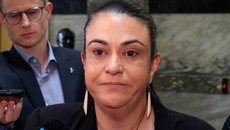More than 150 medical clinics around New Zealand have closed their doors to new patients.
LISTEN ABOVE: Practice Manager Helen Pauley in Marlborough speaks to Mike Hosking about regional doctor shortages
People barred from joining their chosen clinic face will generally face a trek across town to another general practice that is taking patients, but earlier this year all of Marlborough's had closed their books.
The blame nationally has fallen on a shortage of GPs, state funding rising less than primary care costs, rapid population growth and even the hot Auckland property market enticing people to move to the provinces.
Health Minister Jonathan Coleman was unavailable to comment last night.
Nationally, 182 of the 1014 general practices were refusing to take new patients, according to January data, the latest held by the Health Ministry when it was released to the Labour Party last month under the Official Information Act.
The number with closed books fluctuates depending on factors like increased demand for medical care during winter and whether new clinics with extra doctors are being opened to match growth.
The worst-affected areas were Tauranga, South Canterbury, Manawatu-Horowhenua - and especially Marlborough, where none of the region's primary health organisation's eight clinics was taking new patients.
That has now eased in some areas with the hiring of GPs.
One Marlborough clinic, Springlands Health, has occasionally taken new patients when openings occurred this year but had a waiting list of up to 100 patients. It has fully opened its books to new patients only this month.
"We didn't advertise we were open," said practice manager Helen Pauley. "We recorded people's names and as we lost patients we brought people on. We would say, 'We can take 20 this week', which is what a lot of practices do."
She said some of the growth in patient numbers was from Auckland.
"There's a bit of movement from places like Auckland. They have capitalised on the housing market and come down here and give themselves a very similar lifestyle and property and still have some money in the bank."
At Tauranga-based Western Bay of Plenty Primary Health Organisation, 15 of its 25 practices had closed books in January. This was down to 10 of 26 today.
"It changes by the hour," said chief executive Roger Taylor, who noted the region's rapid population growth.
The PHO has nearly 160,000 enrolled patients and is growing by about 1000 every three months. One practice had opened a second clinic and another was planning to do so, said Taylor.
Labour health spokeswoman Annette King said primary care faced major threats and its funding needed to be reviewed.
PHOs had told her that around $200 million was "missing" from the Government's spending on primary care because funding had not kept up with growing demand and costs.
NZ Doctor magazine reported a higher figure yesterday. It said primary care leaders believed the cumulative shortfall in patient-subsidy funding since 2007 was $250.3 million, plus a further $51.5 million shortfall in funding for PHOs.
The ministry has increased the main state funding stream for primary care by 1 per cent this year and GPs were allowed to put up their fees for many patients by 1.25 per cent - after a year in which costs rose by 1.12 per cent.
Coleman's spokeswoman noted that he has previously said: "Primary care funding has increased by $230 million over the past eight years, and by over $25 million in Budget 2016. The Government now spends about $890 million a year on primary care."
The College of General Practitioners says there is a shortage of GP. The number of fulltime equivalent GPs per capita shrank by 12 per cent from 1999 to 2012 - to 74 for every 100,000 people. Australia had 112 per 100,000 people.
"In addition to the low and falling FTE GP to population ratio, further evidence can be seen in the existence of waiting lists for patients wishing to enrol with a practice, and practices with closed books," the college said in a report on the GP workforce.
But it also notes the Government has increased the number of GP training positions - from 69 doctors entering the programme in 2007, to 187 in 2015/16.
General Practitioners Council chairwoman Dr Kate Baddock said, "Yes it has increased, but it doesn't mean we are getting them going into general practice, nor where we need them."
Percentage, and number of general practices with closed books, by district health board, at January:
- 13%; 27 - Auckland
- 39%; 15 - Bay of Plenty
- 4%; 5 - Canterbury
- 16%; 10 - Capital and Coast
- 10%; 9 - Counties Manukau
- 24%; 7 - Hawkes Bay
- 18%; 4 - Hutt Valley
- 0%; 0 - Lakes
- 64%; 21 - MidCentral
- 29%; 10 - Nelson Marlborough
- 13%; 5 - Northland
- 63%; 17 - South Canterbury
- 7%; 6 - Southern
- 0%; 0 - Tairawhiti
- 47%; 14 - Taranaki
- 14%; 10 - Waikato
- 29%; 2 - Wairarapa
- 6%; 3 - Waitemata
- 0%; 0 - West Coast
- 55%; 17 - Whanganui
- 18%; 182 - New Zealand
Take your Radio, Podcasts and Music with you









